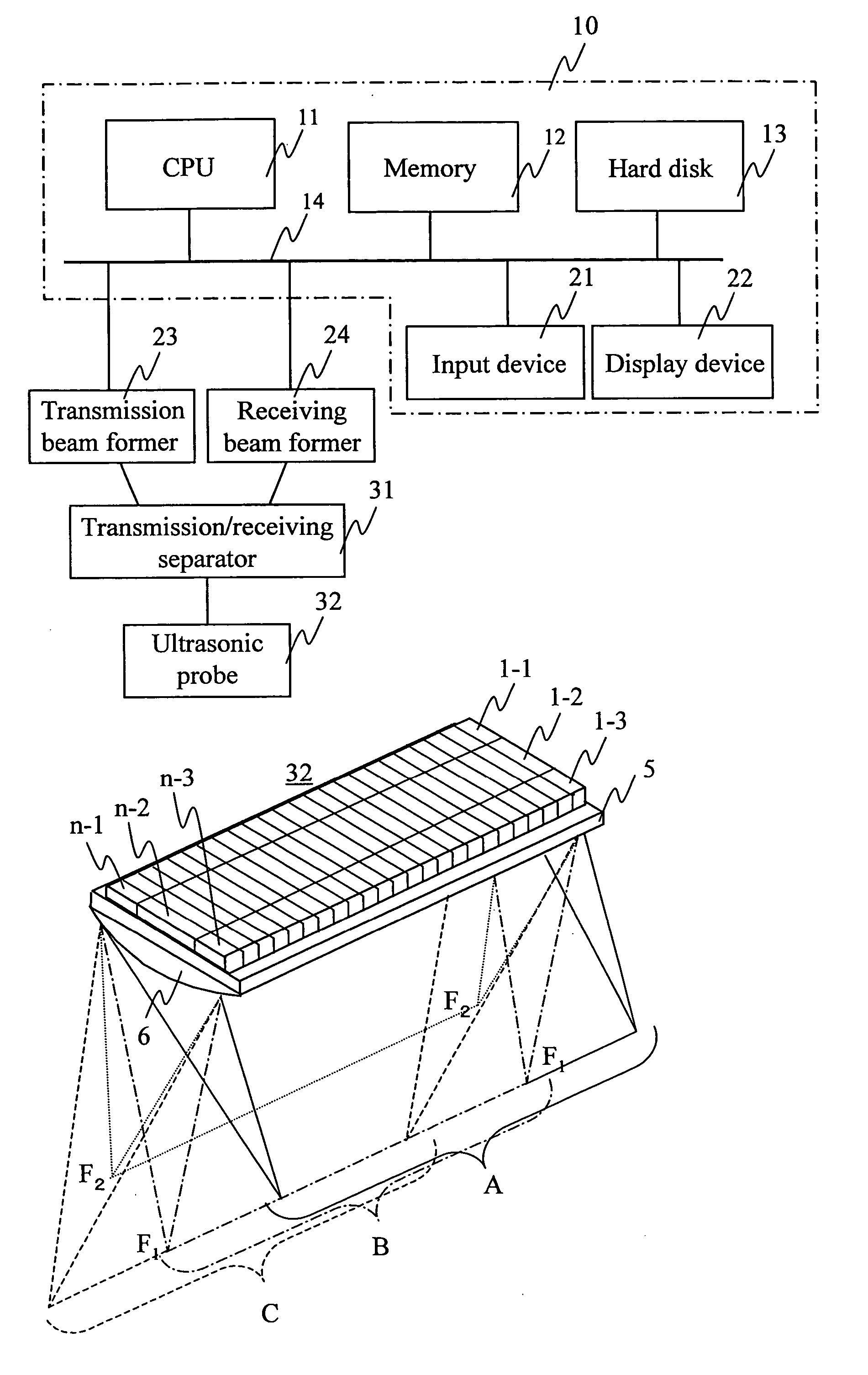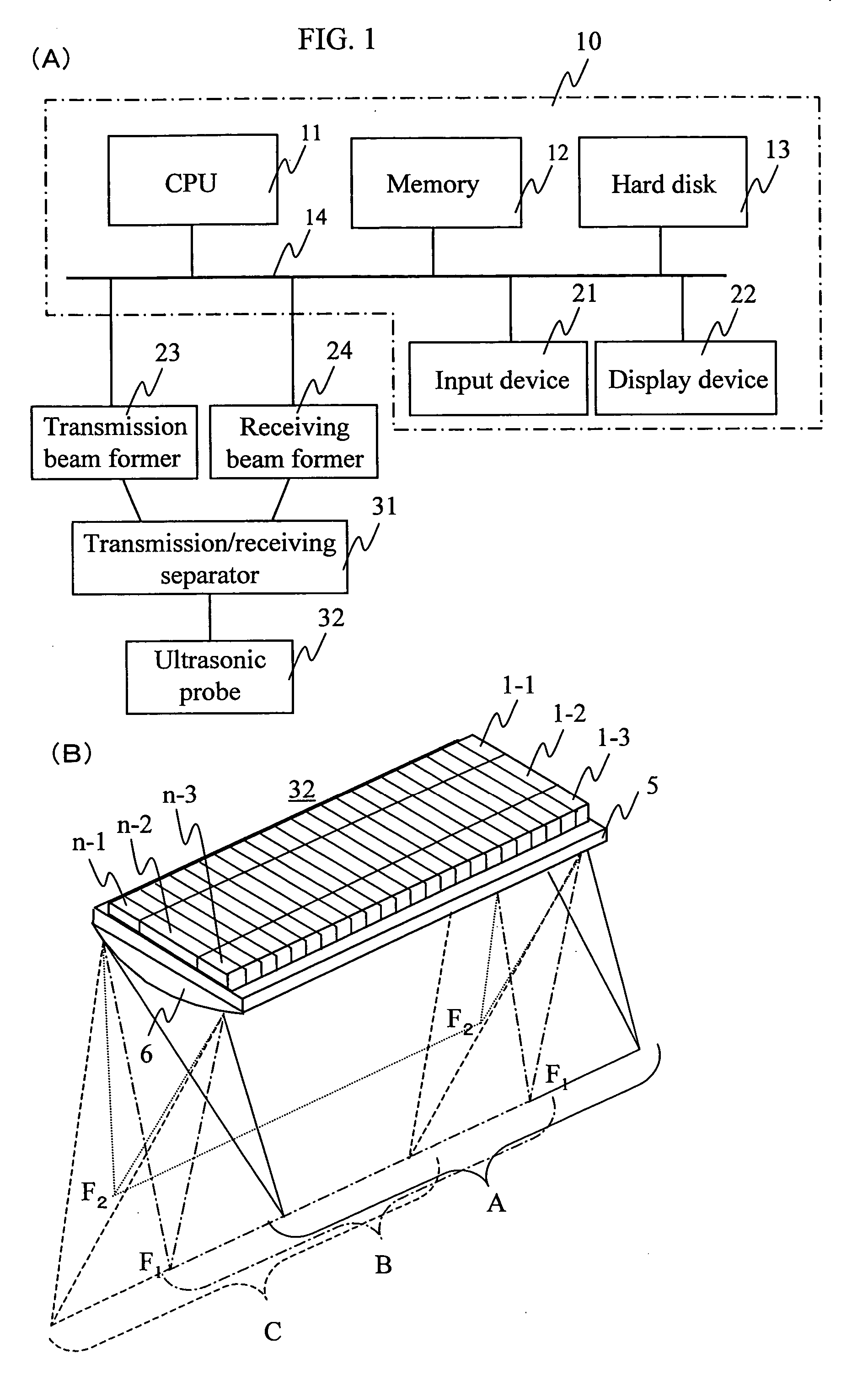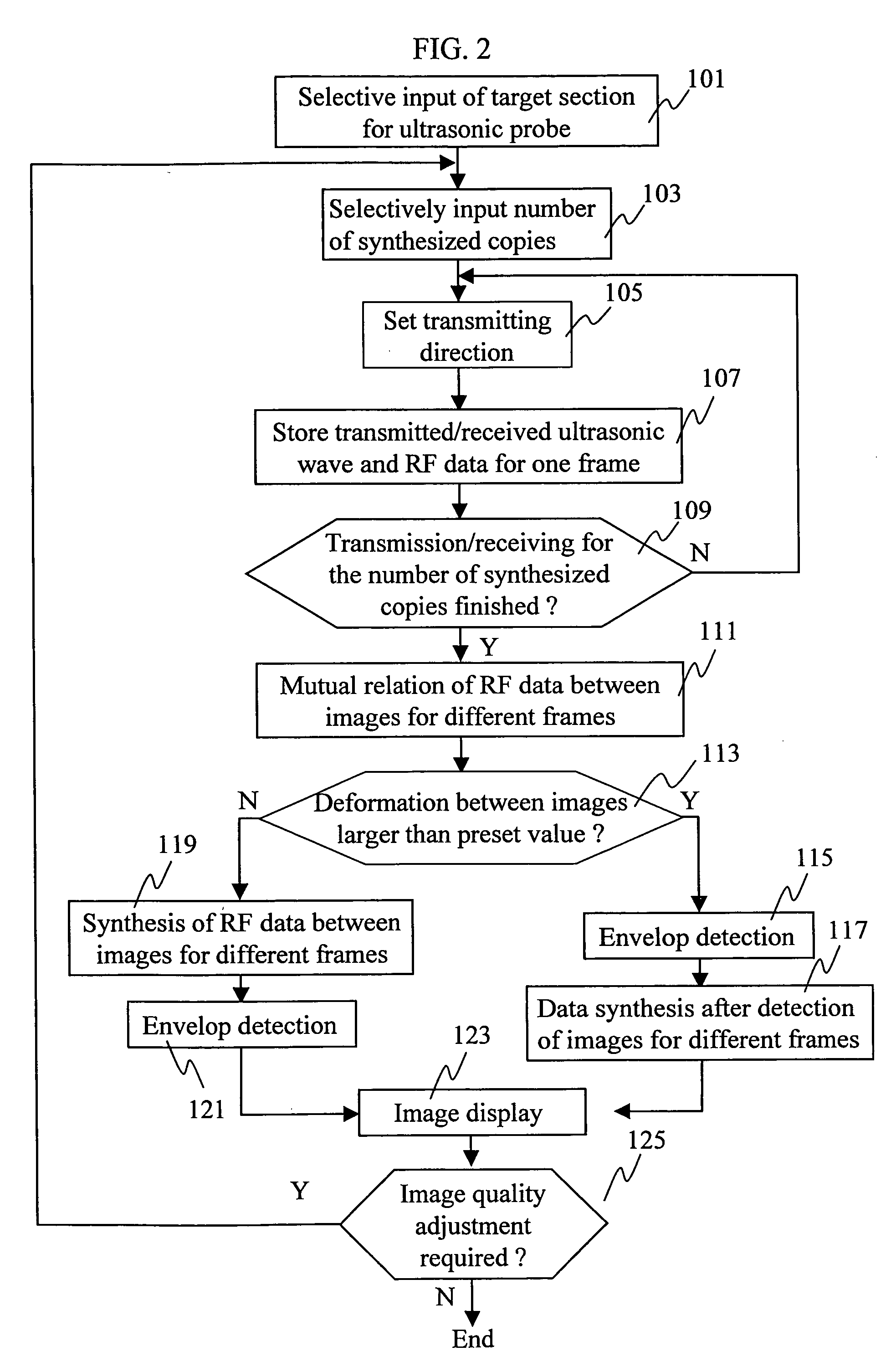Ultrasonographic device and ultrasonographic method
a technology of ultrasonography and ultrasonography, which is applied in the field of ultrasonic imaging devices, can solve the problems of difficult to accurately estimate a local displacement and difficult to perform idealistic correction for the entire image, and achieve the effects of improving spatial resolution, improving contrast resolution, and improving spatial resolution
- Summary
- Abstract
- Description
- Claims
- Application Information
AI Technical Summary
Benefits of technology
Problems solved by technology
Method used
Image
Examples
first embodiment
[0036]FIG. 2 is a flow chart illustrating a signal processing flow in the ultrasonic imaging device according to a first embodiment of the present invention.
[0037] Reference numeral 101 indicates a preparation step, in which data such as a type of an ultrasonic probe to be used and codes indicating objective portions of an object to be imaged is inputted through an input device 21. Reference numeral 103 indicates a step of specifying the number of image frames to be synthesized for the target portions of the scanned object, in which the data is inputted through the input device 21. The number of frames to be synthesized is at least 3 or more. The number of frames may be in the range from 7 to around 15. As the number of frames to be synthesized increases, effects of image synthesis and defects caused by synthesis increase, and therefore the number of frames should preferably be determined according to an object to be imaged (movement of the object to be imaged).
[0038] Reference nu...
second embodiment
[0055]FIG. 3 is a flow chart illustrating a signal processing flow in an ultrasonic imaging device according to a second embodiment of the present invention. In FIG. 3, the same reference numbers are assigned to the corresponding steps in FIG. 2.
[0056] Also in the second embodiment, like in the first embodiment, a type of a ultrasonic probe to be used and a target portion of a scanned object are set (step 101), the number of frames to be imaged for image synthesis is specified (step 103), a ultrasonic signal wave transmission direction toward each target portion to be imaged is set (step 105), RF data for transmitted and received ultrasonic signal waves for one frame is stored (step 107), the number of imaged frames is checked (step 109), and the processing sequence is repeated until the number of imaged frames reaches the number of frames specified in step 103. Then correlation of RF data between images for different frames in step 111 is computed.
[0057] Reference numeral 114 ind...
third embodiment
[0074]FIG. 4 is a flow chart illustrating a signal processing flow in an ultrasonic imaging device according to a third embodiment of the present invention. In FIG. 4, the same reference numerals are assigned to the steps of executing the same processing steps shown in FIG. 2 or 3.
[0075] In the second embodiment, a reference frequency for heterodyne detection is automatically selected according to correlation of RF data between images for different frames (step 114). In the third embodiment, however, a user can change the reference frequency for heterodyne detection based on the user's policy in step 104, which is the only difference from the second embodiment. Other processing steps are the same as those shown in the processing flow shown in FIG. 3.
[0076]FIG. 11 shows an appearance of an input device operated by a user in step 104 in the third embodiment. Reference numeral 51 indicates an operation button, which can be moved in the horizontal direction along a travel guide 52. Re...
PUM
 Login to View More
Login to View More Abstract
Description
Claims
Application Information
 Login to View More
Login to View More - R&D
- Intellectual Property
- Life Sciences
- Materials
- Tech Scout
- Unparalleled Data Quality
- Higher Quality Content
- 60% Fewer Hallucinations
Browse by: Latest US Patents, China's latest patents, Technical Efficacy Thesaurus, Application Domain, Technology Topic, Popular Technical Reports.
© 2025 PatSnap. All rights reserved.Legal|Privacy policy|Modern Slavery Act Transparency Statement|Sitemap|About US| Contact US: help@patsnap.com



